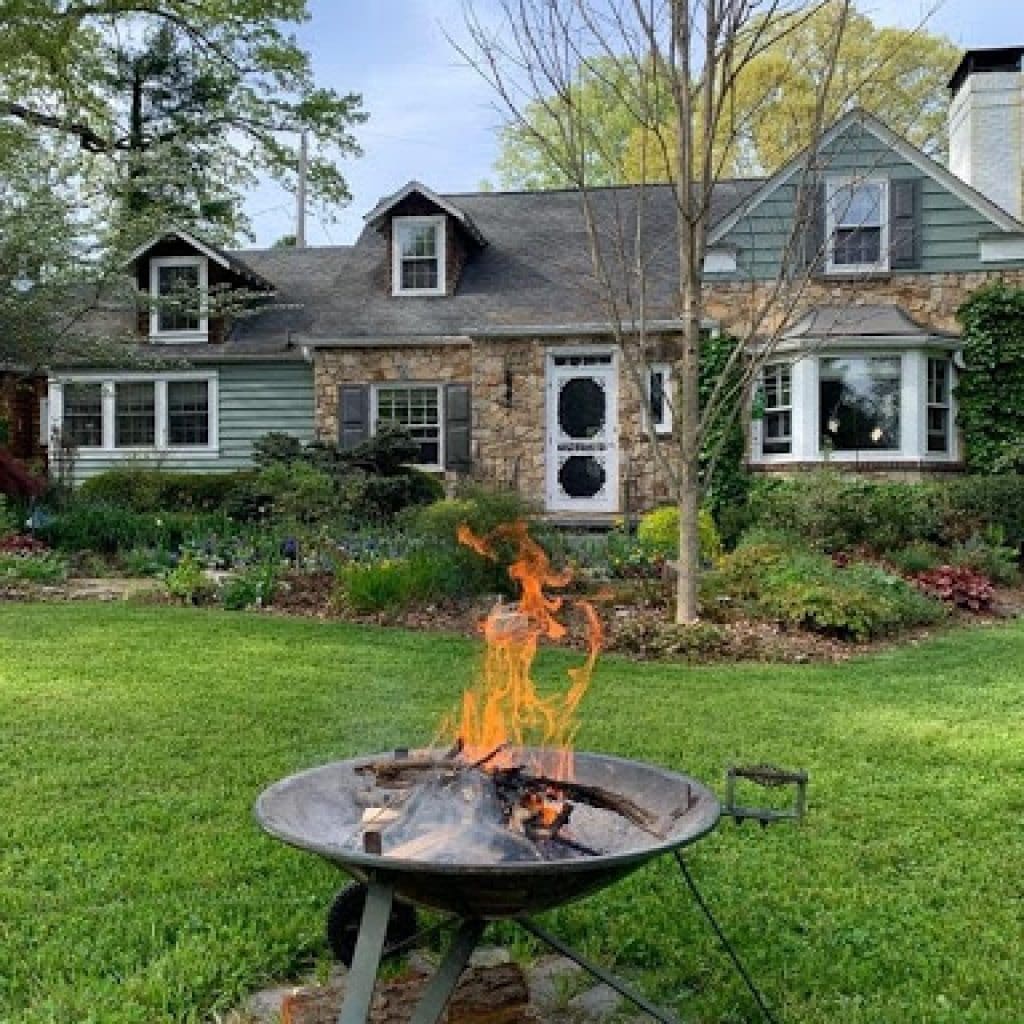How to Build an Outdoor Fireplace that Suits Your Home & Garden
The pool is the first thing you want to jump into during the summer, but there are other backyard features worth investing in as well.
Enter fireplaces and firepits. These fire features come in handy on summer nights when you want to be outside but need a little extra warmth, light and the right mood.
Of course, there are many options for choosing the right design style and function of a fire feature. This post will highlight homeowners’ ideal choices when installing fire features and the best approaches to make them work.
Determine the Style/Type of Firepit/Fireplace You Want
Half of the appeal of choosing an outdoor fire feature is choosing it for its style and aesthetic. You want to choose one that looks good to your eyes and complements your backyard and home.
10 Types of Fire Features for a Fireplace and Patio
- Fire Pits – If I were to guess what the most popular type of fire feature is in America, I’d say it’s the fire pit. It makes sense why – they come in various shapes, sizes and styles, ranging from a campsite look to a more luxurious display.
- Fire Bowls – Fire bowls resemble fire pits, but a fire bowl is portable, whereas a fire pit gets built into the ground.

- Fire Columns – This fire features work similar to fire bowls, except for having different shapes (rectangular). You also build fires in the columns, usually by propane or natural gas (not wood).
- Fire Tables – Fire tables are what they sound like – a hybrid of a table with a built-in fire pit. You can sit at the table and enjoy a meal or a game of cards while you have a fire going in the middle of it. Most of these tables rely on gas or electricity for power.
- Chimineas – Yes, “chiminea” sounds like “chimney” because that’s what it means – in Spanish. They function like fireplaces, with an open front door that directs heat towards those sitting around them.
- Outdoor Fireplaces – An outdoor fireplace is essentially the same as an indoor fireplace – the main difference here is the location. With that said, outdoor fireplaces typically contain weather-resistant materials since they have to withstand the elements (i.e. wind, rain, snow).
- Patio Heaters – A patio heater isn’t a fire feature per se, but it generates the heat of a fire that covers a significant amount of outdoor space. They’re portable and also available in different forms ranging from wall-mount units to tabletop setups.
- Fire/Water Features – If you can’t decide between fire and water and have a good design sense, opt for a fire AND water feature combination. The water in these features doesn’t have much functional value – they just add a nice visual touch. The fire can shimmer in and illuminate the water, making for a dazzling nighttime display.
- Fire Basket – A fire basket, usually made of iron or steel, is another excellent way to stay warm and add a touch to your backyard. You can fill them with coal or wood to burn fire.
Which one of these fire features works best for my home?
The answer is: there is no right or wrong fire feature, only right or wrong matches for your landscape. Answering that question boils down to how you approach the construction of a fire feature.
How to Build a Firepit? – Pick the Right Spot
Consider your backyard’s size. If it’s bigger, you might opt for a complete fireplace or fire table.
I also believe in leaving room between a fire feature and other elements. That means placing it away from trees and plants, which may obscure the view of a feature and cause loose embers to touch them.
For smaller lawns, you might want to choose one of the portable features I mentioned above, such as a chiminea, bowl or fire heater. These elements take up less space.
Some other pointers: if you have to put a fire feature away from the house, make sure you have access to water or a fire extinguisher for emergencies.
Choose the Right Design and Materials for a Fire Feature
Your design choices for a fire feature will depend on installing a permanent fixture or a portable fixture.
Permanent fixtures require a great deal of attention because you have to consider how they complement your home. With that said, there are some general rules of thumb. Fire features made with masonry materials such as brick or stone tend to work with modern architecture homes.
Less modern homes may benefit from more natural materials such as rock or wood – think of a campfire site. Choosing a portable fire feature boils down to how its size, shape and color match with elements since they’re pre-constructed.
You should also consider how you will use a fire feature beyond the purpose of staying warm. For example, if you will use the fire to cook, consider adding a grill or grate to your fire feature so you can rest things like hot dogs or burger patties on them.
Some fire features such as a fire pit are “malleable” enough that they allow you to add elements such as a removable top that can function as a table. All of these considerations can help you narrow down your choice of the fire feature.
Seating for a Fire Pit
If you don’t provide seating for a fire pit or any fire feature for that matter, you might as well not have one at all! The point of building a fire feature is to sit and enjoy the fire for its warmth, to cook, to tell stories and sing, and much more.
With that said, I have a few recommendations for seating: For permanent fire pits, you should allow for 30 to 36 inches of space between the edge of the fire feature and your seats. The type of seating doesn’t matter too much, but I suggest using options such as a continuous bench covering half of the pit’s perimeter (but still leaving a gap as an “escape path”).
Enclosures are ok as well but don’t make them too closed off because that may prove dangerous in the event of a fire – it will be harder to escape. And there’s nothing wrong with temporary chairs – they’re a convenient way to provide seating and are portable.
Safety
Safety is the most crucial aspect of installing a fire feature. Portable and pre-constructed fire features usually come fitted with screen meshes and other elements to contain and prevent fires. Also, electronic units tend to have safety mechanisms such as switches that shut off immediately if they tip over.
However, DIY fire pits and non-mechanical fireplaces need extra consideration for safety. It’s wise to keep leaves and vegetation away from fire features. The reasons for this are apparent. It’s also essential to keep some other basics in mind. Such as checking your local fire codes to ensure you’re not breaking the law.
Work With an Architect in Landscape Design in Knoxville
To build a fire feature, you should have a good grip on landscaping fundamentals and construction techniques.
However, working with a landscape architect makes a world of difference. There are plenty of working parts to consider for a fire feature. For example, the design, the installation itself, safety regulations concerning home fire features and much more. That can be overwhelming for the average homeowner.
That’s why I recommend working with a landscape architect because they can take your vision and make it a reality. Without missing the essential details. And of course, they can add ideas and suggestions you might not see.
Are you looking to build a fire feature but not sure where to start? Get in touch with me for a consultation to help you get started.






